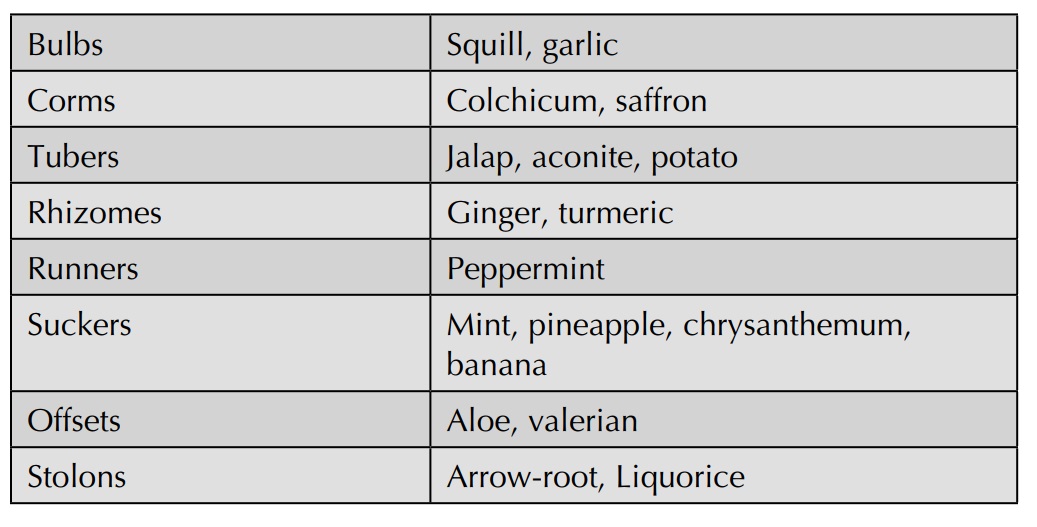Soils, Seeds and Propagation Material
| Home | | Pharmacognosy |Chapter: Pharmacognosy and Phytochemistry : Cultivation, Collection and Processing of Herbal Drugs
The physical, chemical and microbiological properties of the soil play a crucial role in the growth of plants. Water holding capacity of different sizes of soil too affects the plants. The calcium present in the soil would be very much useful for some plants where as the others does not require calcium.
SOILS, SEEDS AND PROPAGATION MATERIAL
The physical, chemical and microbiological properties of the
soil play a crucial role in the growth of plants. Water holding capacity of
different sizes of soil too affects the plants. The calcium present in the soil
would be very much useful for some plants where as the others does not require
calcium. The seed to be used for cultivation should be identified botanically,
showing the details of its species, chemotype and origin. The seeds should be
100% traceable. The parent material should meet standard requirements regarding
the purity and germination. It should be free from pests and diseases in order
to guarantee healthy plant growth. Preference should be given to the resistant
or tolerant species. Plant materials or seeds derived from genetically modified
organisms have to comply with national and European Union regulations. Season
when the seeds should be sown and at what stage a seed should be sown should be
predetermined. Few seeds such as cinnamon losses its viability if stored for
long period and the percentage of germination would be less for the seeds which
were long stored.
Methods of Plant Propagation
Medicinal plants can be propagated by two usual methods as
applicable to nonmedicinal plants or crops. These methods are referred as
sexual method and asexual method. Each of these methods has certain advantages,
and also, disadvantages.
1.
Sexual method (seed propagation)
In case of sexual method, the plants are raised from seeds
and such plants are known as seedlings. The sexual method of propagation enjoys
following advantages:
1.
Seedlings
are long-lived (in case of perennial drugs) and bear more heavily (in case of
fruits). Plants are more sturdier.
2.
Seedlings
are comparatively cheaper and easy to raise.
3.
Propagation
from seed has been responsible for pro-duction of some chance-seedlings of
highly superior merits which may be of great importance to specific products,
such as orange, papaya, etc.
4.
In
case of plants where other vegetative methods cannot be utilized, propagation
from seeds is the only method of choice.
Sexual method suffers from following limitations
1.
Generally,
seedling trees are not uniform in their growth and yielding capacity, as
compared to grafted trees.
2.
They
require more time to bear, as compared to grafted plants.
3.
The
cost of harvesting, spraying of pesticides, etc. is more as compared to grafted
trees.
4.
It
is not possible to avail of modifying influence of root stocks on scion, as in
case of vegetatively propagated trees.
For propagation purpose, the seeds must be of good quality. They should be capable a high germination rate, free from diseases and insects and also free from other seeds, used seeds and extraneous material. The germina-tion capacity of seeds is tested by rolled towel test, excised embryo test, etc. The seeds are preconditioned with the help of scarcification to make them permeable to water and gases, if the seeds are not to be germinated in near future, they should be stored in cool and dry place to maintain their germinating power. Long storage of seeds should be avoided.
Before germination, sometimes a chemical treatment is given with stimulants like gibberellins, cytokinins, ethylene, thiourea, potassium nitrate or sodium hypochlorite. Gibbereilic acid (GA3) promotes germination of some type of dormant seeds and stimulates the seedling growth. Many freshly harvested dormant seeds germinate better after soaking in potassium nitrate solution. Thiourea is used for those seeds which do not germinate in dark or at high temperatures.
Methods of sowing the seeds
Numerous methods of sowing the seeds of the medicinal plants are in practice. Few of them using seeds for cultiva-tion are described:
Broadcasting: If the seeds are extremely small the sowing is done by broadcasting method. In this method the seeds are scattered freely in well prepared soil for cultivation. The seeds only need raking. If they are deeply sown or covered by soil, they may not get germinated. Necessary thinning of the seedlings is done by keeping a specific distance, e.g. Isabgol, Linseed, Sesame, etc.
Dibbling: When the seeds of average size and weight are available, they are sown byplacing in holes. Number of seeds to be put in holes vary from three to five, depending upon the vitality, sex of the plants needed for the purpose and the size of the plant coming out of the seeds.
For example, in case of fennel four to five fruits are put in a single hole keeping suitable distance in between two holes. In case of castor, only two to three seeds are put. In case of papaya, the plants are unisexual and only female plants are desired for medicinal purposes. Hence, five to six seeds are put together and after the sex of the plants is confirmed, healthy female plant is allowed to grow while male plants and others are removed.
Miscellaneous: Many a times the seeds are sown in nursery beds. The seedlings thus produced are transplanted to farms for further growth, such as cinchona, cardamom, clove, digitalis, capsicum, etc.
Special treatment to seeds: To enhance germination, special treatments to seeds may be given, such as soaking the seeds in water for a day e.g. castor seeds and other slow-germinating seeds. Sometimes, seeds are soaked in sulphuric acid e.g. henbane seeds. Alternatively, testa is partially removed by grindstone or by pounding seeds with coarse sand, e.g. Indian senna. Several plant hormones like gibberellins, auxins are also used.
2. Asexual method
In case of asexual method of vegetative propagation, the vegetative part of a plant, such as stem or root, is placed in such an environment that it develops into a new plant.
Asexual propagation enjoys following advantages:
1. There is no variation between the plant grown and plant from which it is grown. As such, the plants are uniform in growth and yielding capacity. In case of fruit trees, uniformity in fruit quality makes harvesting and marketing easy.
2. Seedless varieties of fruits can only be propagated vegetatively e.g. grapes, pomegranates and lemon.
3. Plants start bearing earlier as compared to seedling trees.
4. Budding or grafting encourages disease-resistant varieties of plants.
5. Modifying influence of root-stocks on scion can be availed of.
6. Inferior or unsuitable varieties can be over-looked.
It suffers from following disadvantages:
1. In comparison to seedling trees, these are not vigorous in growth and are not long-lived.
2. No new varieties can be evolved by this method.
Asexual method of vegetative propagation consists of three types:
a) Natural methods of vegetative propagation.
b) Artificial methods of vegetative propagation.
c) Aseptic method of micropropagation (tissue-culture).
a) Natural methods of vegetative propagation: It is done by sowing various parts of the plants in well prepared soil. The following are the examples of vegetative propagation.

b) Artificial methods of vegetative
propagations: The method by which plantlets or
seedlings are produced from vegetative part of the plant by using some
technique or process is known as artificial method of vegetative propaga-tion.
These methods are classified as under:
1.
Cuttings
i.Stem cuttings
a)
Soft
wood cuttings: Berberry.
b)
Semi
hard wood cuttings: Citrus, camellia.
c)
Hard
wood cuttings: Orange, rose and bougainvil-lea.
i.
ii.Root cuttings: Brahmi.
iii.Leaf cuttings: Bryophyllum.
iv.Leaf bud cuttings.
2. Layering
i. Simple layering: Guava, lemon
ii. Serpentine layering: jasmine,
clematis
iii. Air layering (Gootee): Ficus, mango,
bougainvillea, cashew nut
iv. Mount layering
v. Trench layering
vi. Tip layering
3. Grafting
i. Whip grafting: Apple and rose
ii. Tongue grafting
iii. Side grafting: Sapota and cashew nut
iv. Approach grafting: Guava and Sapota
v. Stone grafting: Mango
(c) Aseptic methods of micropropagation (tissue culture)
It is a novel method for propagation of medicinal plants. In
micropropagation, the plants are developed in an artificial medium under
aseptic conditions from fine pieces of plants like single cells, callus, seeds,
embryos, root tips, shoot tips, pollen grains, etc. They are also provided with
nutritional and hormonal requirements.
Preparation and Types of Nursery Beds
For various genuine reasons, seeds cannot be sown directly
into soil i.e. very small size (Isabgol, tulsi) high cost, poor germination
rate and long germination time (Cardamom, Coriander). Under such circumstances,
seeds are grown into the nursery bed which not only is economical, but one can
look after the diseases (if any) during germination period. Small size of beds
can be irrigated conveniently along with fertilizers, as and when necessary.
There are four types of nursery beds.
1. Flat bed method
2. Raised bed method
3. Ridges and furrow method
4. Ring and basin method
Taking into consideration the amount of water and type of
soil required for a particular seed one should select the type.
Methods of Irrigation
Water is essential for any type of cultivation. After
study-ing the availably and requirement of water for a specific crop, one has
to design his own irrigation system at the reasonable cost.
Following methods of irrigation are known traditionally in
India. The cultivation has an option after giving due consideration to the
merits and demerits of each.
1.
Hand
watering: economical and easy to operate.
2.
Flood
watering: easy to operate, results in wastage of water.
3.
Boom
watering: easy to operate, but restricted utility.
4.
Drip
irrigation: Scientific, systematic and easy to operate; costly.
5.
Sprinkler
irrigation: Costly, gives good results.
Related Topics
